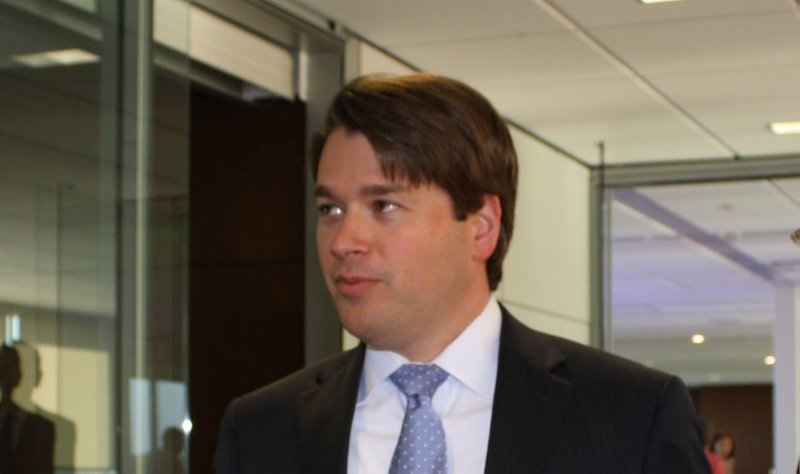The Arkansas Public Employees Retirement System's investments increased in value by $477 million the last quarter to $9.57 billion, its investment consultant reported last week.
The system's investment return was 6.01% in the quarter that ended Sept. 30 to rank in the top 7% of its peers among the nation's public pension systems, Callan said in a written report to the system's board of trustees.
The unaudited market valuation of the system's investment portfolio totaled $10.08 billion at the close of business Tuesday night, system Executive Director Duncan Baird said after Wednesday's board of trustees meeting.
According to Callan, the system's domestic stock market investments earned a return of 9.03% to end the quarter valued at $3.91 billion, while the system's international stock market investments posted a return of 7.79% to finish the quarter valued at $2.33 billion.
The investment consultant said the system's bond investments earned a return of 2.19% last quarter to end up valued at $1.58 billion, while real assets, including real estate, energy and timber, had a return of minus 0.26% last quarter to end up valued at $1.22 billion.
The system's diversified strategy investments earned a return of 3.38% to finish the quarter valued at $459.6 million, according to Callan.
The system's investment return in the year that ended Sept. 30 was 8.08% to rank in the top 35% of its peers. The target return is 7.15% a year.
The return over the past five years has averaged 8.66% a year to rank in the top 28% of its peers. The return over the past 10 years has averaged 8.75% to rank among the top 15% of its peers.
Trustees voted to hire Acadian Asset Management and Franklin Templeton Investment as international stock market investment managers to manage about $165 million apiece, Baird said.
The trustees voted to confirm their Aug. 19 vote to maintain the system's 15.32% of employee payroll charged to state and local governments in fiscal 2023, which starts July 1, 2022, Baird said.
State and local governments paid $299.4 million into the system in fiscal 2020, while system members paid $71.4 million, according to a system report. Fiscal 2020 ended June 30.
The trustees in July approved draft legislation aimed at improving the system's financial status and reducing its unfunded liabilities. The proposals would be considered by the Arkansas General Assembly in the regular session starting in January. One proposal would gradually increase the salary rate charged to members who pay into the system from 5% to 7% over eight years.
The system included 44,373 working members with an average salary of $40,469 a year and 39,805 retirees who were paid a total of $637 million in benefits, or an average of $16,003 a year, as of June 30, according to system actuary Gabriel, Roeder, Smith & Co.
As of June 30, the system's assets were valued at $9.09 billion and its actuarial accrued liabilities totaled $11.51 billion, so the system was 79% funded, Gabriel reported.
The system's unfunded liabilities totaled $2.42 billion as of June 30 and are projected to be paid off over a 23-year period, according to Gabriel. Unfunded liabilities are the amount by which a system's liabilities exceed the value of its assets. Actuaries often compare the payoff period to a mortgage on a house.
SECURITIES LITIGATION
The trustees on Wednesday approved a securities litigation policy that requires the system's executive director to make a recommendation for a securities litigation claim to the board for approval before seeking lead plaintiff status or initiating such litigation.
The policy also establishes a threshold of a loss of at least $1 million in order for the system to seek lead or co-lead plaintiff status in a securities class-action lawsuit.
Under the policy, the board delegates to the executive director the authority to review and evaluate potential securities litigation and the authority to make all administrative, procedural or strategic decisions to meet the goals and objections of the board.
If several law firms are interested in representing the system for a single case, the factors to consider in which firm to hire include the first to file or develop the theory for the case; expertise; willingness to negotiate contingency fees and charge only reasonable and necessary costs; and transparent billing practices.
The system has 18 securities-monitoring firms. The firms are paid on a contingency-fee basis and potentially millions of dollars are at stake in some successful and complex cases.

